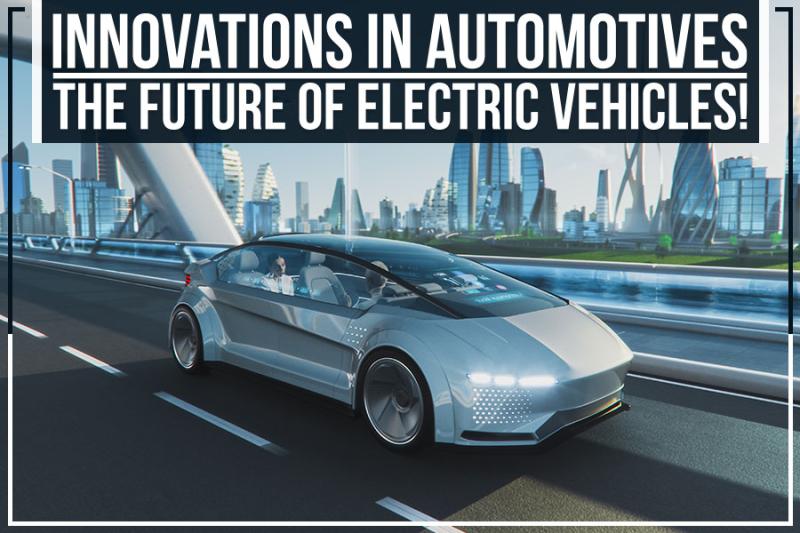
- 22 Nov 2022
- 668 views
- 6 posts
The way we travel is changing. With technological advances and a desperate need for greater sustainability, vehicles are becoming cleaner and smarter. But are electric vehicles the future of transport?
In this post, we’ll explore what electric vehicles are and how they work. We’ll also examine how sustainable they are, and whether they’re the solution for the eco-friendly transport of the future.
What are electric vehicles?
Let’s start with an electric vehicle definition. We know that vehicles are used for transporting vehicles or goods, whether on land, water, or via air. An electric vehicle (also known as an EV) is a vehicle that is powered by electricity, usually in the form of electric motors powered by batteries or fuel cells.
When we see this definition, it’s easy to think only of things like electric cars. However, electric vehicles also include other road transport (such as trucks, bikes, and buses), as well as electric planes and even boats.
You’ll often see a variety of types of electric vehicles fit under this term. This includes:
- All-electric vehicles. In this type of electric vehicle, the battery is the only power source.
- Hybrid vehicles. These use a combination of a combustion engine with an electric motor, the latter which recharges when the vehicle is in motion.
- Plug-in hybrids. These also combine combustion engines with rechargeable batteries, but the batteries can also be recharged directly when plugged in.
- Fuel-cell vehicles. These generate their own electricity from onboard fuels such as hydrogen. They don’t need to plug into an electrical outlet to recharge.
You can learn more about low carbon road transport with our free online course from experts at Cenex.
A brief history of electric vehicles
Electric cars and other vehicles feel very much concepts of the present and future. New technologies and legislation mean that manufacturers worldwide are turning their attention to fully or partially electric fleets. But in reality, the thought of using electricity to power transport dates back well over 100 years.
Throughout the 19th century, various experiments with electric vehicles took place. The first battery-powered electric motor was invented by Thomas Davenport in 1834, and over the following decades, various scientists and engineers tinkered with the design.
Electric carriages, cars, trams and even trains started to emerge towards the mid to late 1800s. However, the main issue with these vehicles was that the batteries used weren’t rechargeable, making them impractical for commercial use.
The details of the first electric cars are often debated. Some suggest that the first self-powered, human-carrying electric vehicle was created by French inventor Gustave Trouvé in 1881. However, it’s widely agreed that the first electric production car was developed in London in 1884 by Thomas Parker.
Electric cars soon became incredibly popular, particularly in the US. A large proportion of cars on the road in the early 1900s were electric. However, the large-scale production of Ford’s petrol cars and the increasingly affordable price of oil soon meant that electric vehicles couldn’t compete.
It wasn’t until the 1970s that interest in electric vehicle technology was renewed when vehicles such as the CitiCar were produced. In the mid-1990s, General Motors launched the EV1, and the Toyota Prius became the first mass-produced hybrid car.
Issues of power and range were still an issue until the late 2000s when Tesla launched its first Roadster. Nowadays, most major manufacturers have at least some electric or hybrid vehicles in their range, and battery manufacturing is better than ever.
Current electric vehicle technology
So, electric vehicles have been around longer than you might think. But what is the current technology like? Aside from electric cars (we’ll cover them further down), there are several notable forms of electric transportation:
- Logistics vehicles. From large trucks to freight handling, there is a range of companies creating electric logistics vehicles. However, the view was that electric batteries for freight vehicles would be expensive and impractical. New studies suggest that a better charging network could solve the problem.
- Public transport. Electric buses are already hugely popular in China, while Europe is picking up the pace of adoption. In the UK, around 38% of the railway network is electrified. Electric trams are also popular worldwide.
- Aircraft. Electric aircraft technology is still in its infancy. According to some experts, modern passenger planes would ‘need batteries weighing 30 times more than its current fuel intake, meaning it would never get off the ground’.However, progress is being made, and electric planes do exist.
- Boats. Battery power is also a problem for electric boats. The limited power is problematic, particularly for larger vehicles and longer trips. However, there are prototypes starting to emerge that prove that EVs can exist in many different formats.
How do electric cars work?
Let’s take a closer look at how electric cars work, as well as at some key questions surrounding them. We’ll focus on fully electric cars as opposed to hybrids or plug-in hybrids.
We’ll keep this explanation simple here, covering some of the basics. Essentially, electric cars use an electric motor to power the vehicle’s wheels. These motors get their energy from batteries that are usually placed low down in the car. There is often also an additional battery that powers the electrics, lights, and other such elements.
The batteries in electric cars are rechargeable and can be charged from the electricity grid. This means that either a wall-mounted charger or fast charger (such as those at service stations) are required.
Of course, electric cars need a way to control how much power they draw from the batteries to power the motor. For this task, a control unit is used. Essentially, this uses the accelerator to determine how much power is needed, mimicking the feel of a combustion engine.
You can learn more about battery storage and technology with our free online course.
How long does it take to charge an electric car?
There are a few variables to take into account when it comes to electric car charging. The first is the type of battery used – most use a Lithium-ion (Li-ion) battery, although the capacity will often differ. Next is the type of charging used – a standard home 7kW charging point will be a lot slower than a rapid 150kW one.
As an example, the 2019 Tesla Model S has a 75kWh battery. To fully recharge it, estimates suggest 11 hours for a 7kW charger, but less than an hour for a 150kW charger.
How much does it cost to charge an electric car?
Again there are several factors to consider when it comes to the cost of charging an electric car. As well as the cost of the electricity in units (a kilowatt-hour or kWh), you need to take into account the size of the battery.
In the UK, the average cost is 10-14 pence per kWh. So again, taking the Tesla Model S as an example, its battery can hold 100kWh of charge. At 10p per kWh, it would cost £10 to fully charge the battery.
How long do electric car batteries last?
There are two ways to look at this question. The first is the electric car range – how far a car can travel on a full charge. As you might expect, this also varies depending on the vehicle and the type of battery it has. However, the average is around 200 miles, with the Tesla Model S reaching 345 miles and the Nissan Leaf reaching 135 miles.
The other consideration is the lifespan of EV batteries. The batteries that electric cars use become less efficient over time, meaning they eventually hold less charge. However, industry stats predict that most electric car batteries will last between 10 and 20 years before they need replacing.
































